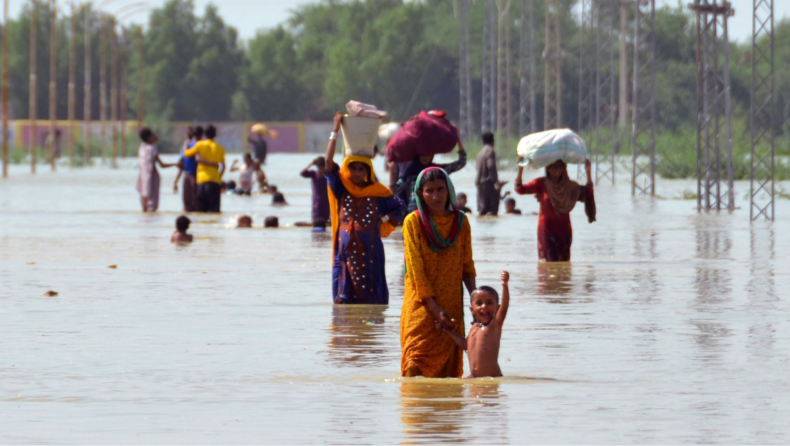In flood-hit areas, the situation is highly serious. United Nations International Children Emergency Fund representative said in a statement that malnourished children are fighting dengue fever, diarrhea, and several skin diseases.
The UN has said, in Pakistan approximately 16 million children are affected by “super floods”. Also, an estimated 3.4 million children need immediate lifesaving support. One-third of the country is under water. The country is experiencing severe flooding caused by torrential monsoon rains.
In flood-hit areas, the situation is extremely serious. The malnourished children are battling diarrhea, dengue fever, and several skin diseases said United Nations International Children’s Emergency Fund (UNICEF) representative Abdullah Fadil. One third of the country is under water.
The flood-affected areas are really at huge risk. Approximately 528 children’s lives have been claimed by the floods. The flooding is mainly triggered by glacial melt in the northern parts. People need support in terms of food, clean drinking water, shelter, medicines, and toilets.
“Each and every one of these deaths is a tragedy that could have been averted,” Fadil said.
Pakistan’s flood-affected people’s situation
Around 16 million children have been affected by these super floods. 3.4 million of them need immediate lifesaving support. Fadil also said, “Young children are living out in the open with their families, with no drinking water, no food, and no livelihood, exposed to a wide range of new flood-related risks and hazards.”
If the children are not massively supported and aided, then many more children will lose their lives. Many mothers are suffering from anemia and malnutrition themselves. They have very low-weight babies. Mothers are ill or exhausted. Even they are not capable of breastfeeding their children.
The children are suffering the price of a climate disaster not of their making. The floods washed away homes, railways, roads, bridges, livestock, and crops. An estimated 150,000 people were forced to relocate.
On a visit to Pakistan, the UN Secretary General, Antonio Guterres, said he had “never seen such climate carnage”.
With 763 fatalities, the Sindh province is the area most affected, followed by Baluchistan (336), Khyber Pakhtunkhwa (308), and Punjab (221). 2,048,789 homes have also been damaged, and 1,163,237 cattle deaths are thought to have occurred.
Due to floods, millions of families are forced to leave their homes. In some areas, temperatures passed 40 degrees Celsius (104 degrees F). People are now living with little more than rags to protect themselves from the scorching sun.
Many families have been forced to take shelter alongside roads. So, children are at huge risk. Most lower land areas are covered by water. Furthermore, in the area, there are threats from scorpions, snakes, and mosquitoes.
Fadil said that UNICEF is doing everything it can to support affected families and children. In response to the damage caused by the disaster, the government of Japan decided to give an emergency grant of aid of USD 7 million to Pakistan.
Of the USD 7 million, the World Food Programme will get USD 2.5 million, the International Organization for Migration USD 1.5 million for shelter and non-food items, UNHCR USD 1 million for protection, and non-food items, and the International Federation of Red Cross and Red Crescent Societies USD 1 million for health and medical care, UNICEF USD 1 million for water. The Canadian government pledged 3 million Canadian dollars.
In the flood-hit areas of Sindh, over 90,000 people were treated. They were treated mainly for water-borne diseases and serious infections. On Friday, government data showed the total death toll surpassed 1,545 people, 552 of them children.
According to a Sindh government report, flooded areas have been taken over by dengue fever, diarrhea, malaria, and skin diseases. The National Disaster Management Authority claimed 12,850 people had been injured by the flood.
Record monsoon rains caused the floods. A minister said, “the worst humanitarian disaster in a decade.” The health minister of the southern Sindh Province said that the hardest hit areas are now in a “state of emergency”. Many schools and other facilities are shutting down.
The Sindh provincial government reported 588 cases of malaria, 17,977 diarrhea cases, and 20,064 skin diseases. Some people are forced to dig for possessions buried several feet deep.
People need mosquito nets, food, kitchen equipment, water buckets, and other essentials. People do not have access to clean water.













